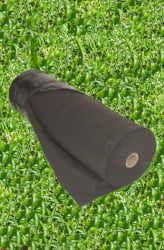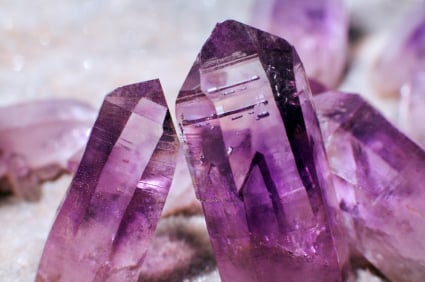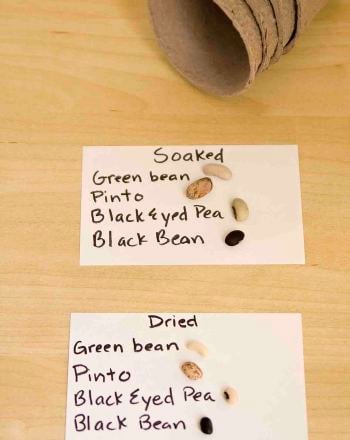Science project
Growing Plants in Garbage
Grade Level: 5th - 8th; Type: Biology
Objective:
Determine whether plants will grow in garbage.
The purpose of this experiment is to find out whether plants are able to get enough nutrients from different types of garbage to be able to grow.
Research Questions:
- What is the purpose of a plant’s roots?
- What types of nutrients do plants need in order to survive?
- How do farmers add these nutrients into the soil?
- How is soil made?
- Is all garbage full of nutrients?
- How do plants create energy?
Unlike animals, most plants cannot get the nutrition they need from consuming other plants or animals. Instead, they collect energy from the sun and nutrients from the soil using their roots. Plants need many different vitamins and minerals in order to grow strong, just like humans and animals do. One of the most important things for plants to grow is good soil, with lots of composted matter. But the quality of the soil around the world is diminishing, and fertilizer must be added to it in order to keep the quality up. Learning about what types of matter plants grow best in can help farmers discover what they should put in compost piles when creating new soil to grow fruits and vegetables in.
Materials:
- Seeds (green bean seeds work well because they grow quickly and are hardy)
- 5 containers
- A marker
- Potting soil
- Shredded paper
- Left over scraps of fruits and vegetables, such as orange or banana peels, apple cores, the ends of squashes or beans, etc.
- The contents from a vacuum cleaner chamber or bag
Experimental Procedure:
- Label the containers, “Soil/Control,” “Paper,” “Vegetable,” “Vacuum,” and “Mixed Garbage.”
- Fill the “Soil/Control” container with potting soil.
- Fill the “Paper” container with shredded or torn paper.
- Fill the “Vegetable” container with discarded pieces of fruits and vegetables.
- Fill the “Vacuum” container with the contents of the vacuum cleaner. You may want to vacuum the house first to get enough to fill the container.
- Fill the “Mixed Garbage” container with 1/3 shredded paper, 1/3 vegetable matter and 1/3 contents from the vacuum cleaner. Mix all the garbage together.
- Plant the seeds in the pots as directed on the back of the seed package.
- Water the plants with clean tap water. Do not use fertilizer.
- Place the plants in a warm, sunny place outdoors. You won’t want to keep them in the house because they may attract flies. If flies do move into the containers, it won’t hurt the plants (in fact, it may even help the garbage turn into soil).
- Water the plants daily and record their growth on a chart such as the one below.
PLANT GROWTH CHART
|
HEIGHT |
Soil/Control |
Paper |
Vegetable |
Vacuum |
Mixed Garbage |
|
Day 1 |
|
|
|
|
|
|
Day 2 |
|
|
|
|
|
|
Day 3 |
|
|
|
|
|
|
Day 4 |
|
|
|
|
|
|
Day 5 |
|
|
|
|
|
PLANT GROWTH CHART
|
NUMBER OF LEAVES |
Soil/Control |
Paper |
Vegetable |
Vacuum |
Mixed Garbage |
|
Day 1 |
|
|
|
|
|
|
Day 2 |
|
|
|
|
|
|
Day 3 |
|
|
|
|
|
|
Day 4 |
|
|
|
|
|
|
Day 5 |
|
|
|
|
|
Terms/Concepts: Germinate; Growth; Photosynthesis; Roots: Stems; Leaves; Flowers; Fruit
References:
Education.com provides the Science Fair Project Ideas for informational purposes only. Education.com does not make any guarantee or representation regarding the Science Fair Project Ideas and is not responsible or liable for any loss or damage, directly or indirectly, caused by your use of such information. By accessing the Science Fair Project Ideas, you waive and renounce any claims against Education.com that arise thereof. In addition, your access to Education.com's website and Science Fair Project Ideas is covered by Education.com's Privacy Policy and site Terms of Use, which include limitations on Education.com's liability.
Warning is hereby given that not all Project Ideas are appropriate for all individuals or in all circumstances. Implementation of any Science Project Idea should be undertaken only in appropriate settings and with appropriate parental or other supervision. Reading and following the safety precautions of all materials used in a project is the sole responsibility of each individual. For further information, consult your state's handbook of Science Safety.













